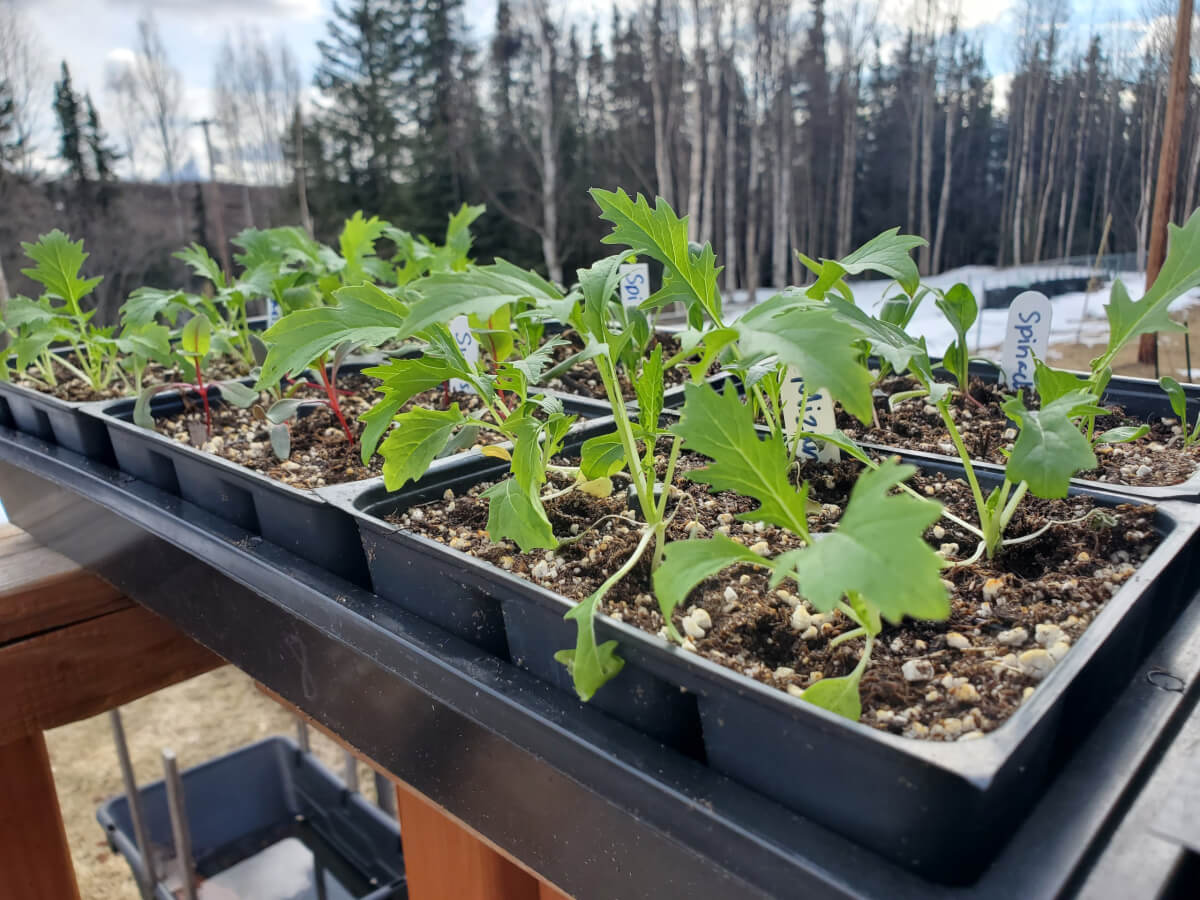Since we’re in that 4 to 6 week window prior to our last frost, it’s time to talk about hardening off! If you grow from seed, you MUST do this or your will plants WILL die! It doesn’t matter if you’re transferring outdoors or into a greenhouse, hardening off is an essential step for any plants that were born under artificial or low levels of light! This topic will be a multi-day post, as there’s a bit to cover! Today, we’ll cover the reasons why we do it and also our overall process.
Hardening off is the process of acclimating your plants to the power of sunlight, it’s an incredibly powerful light source. Plants are able to build up protections against that sunlight, but it takes several short exposures to sunlight to build those protections. You can almost think of it like your plants are developing their own sun-tan lotion, if you will.
We’ve played around with hardening off schedules a lot. The fastest possible schedule, that works across all plants, takes five total days. The first day outside is for 45 to 60 minutes. Day two and three are for two hours. Day four is four hours. Day five is eight hours. After that, the plants will be sufficiently hardened off and can live outside or in a greenhouse, so long as the temperatures permit.
The days you do this don’t have to be contiguous, and you can skip a day or two to account for weather. If weather slows you down and you can’t get your plants outside for several days, we’d suggest starting again with the same amount of time you used on the previous hardening off day. You might have heard you need to keep your plants in the shade in the beginning, that’s a myth. Just keep it short in those first few days.
Our schedule can be extended a bit if you want to play it even more safe. The biggest benefits will come with lower amounts of sun exposure. So, adding another day or two of one or two hour exposures in the beginning will provide maximum value and protection. Also, if you notice any sunburn on your plants (typically, white spots), it’s vitally important to slow down the process. If we see this, we’ll typically allow our plants a day or two to recover indoors before continuing with another sun exposure for an hour or two.
It’s still very important, in the shoulder seasons, to watch weather conditions and make sure you’re not exceeding the capabilities of your plant’s survival. We also suggest hardening off this early with only cold hardy and frost tolerant plants. As a general guideline, we recommend bringing your plants indoors when temperatures get into the 30’s. (Also, peppers should never be exposed to temperatures below 50 degrees!) If your greenhouse is unheated, make sure low night time temperatures aren’t getting into the frost danger zone (below 36 degrees) as frost can still develop inside of a greenhouse! This can wreck gardens, a greenhouse is not an automatic source of protection! Only a heated greenhouse provides that “true” safety for your plants! If in doubt, bring your plants inside, it’s the safest thing to do!
Keep an eye out for cold stress. If you see it, you’re pushing things too fast and need to wait for warmer days. It’s a very obvious sign, but is not usually lethal to cold hardy and frost tolerant plants.
Since we’re still flirting with unsafe and undesirable temperatures for hardening off here in the interior, tomorrow’s post will be on the topic of “what we’re looking for” weather-wise to start our hardening off processes. That said, southern portions of Alaska are starting to see ideal conditions, so we figured we’d get the information out there now. Stay tuned, a bit more to come on this topic! If you’d like to get ahead, we’ve linked our full hardening off guide in the comments below!


